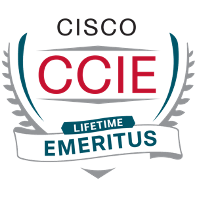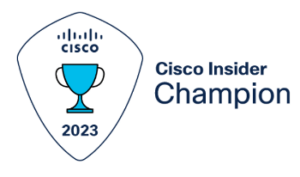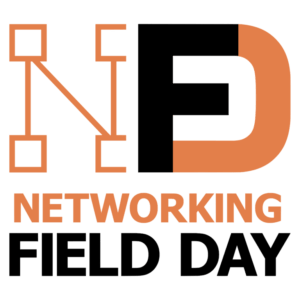I’ve been pondering why this feels like we had a relatively quiet tech summer and fall so far. Is there more to it than tech companies and startups dialing back their marketing budgets and laying people off?
In this blog, I’ll provide my thoughts about what’s hot and then supply a “Required Reading” list! An incidental objective here is to share some interesting links.
Granted, there is a lot of energy (startup companies) deservedly going into Security. More about that in a separate later blog. Just looking at some “capabilities” charts that group products into 47 different categories can be exhausting. And startups are still discovering new angles or niches in the overall security space.
Example: Cisco just acquired oort.io, which is (was?) a “young” company uniquely focusing on Identity:
“We analyze telemetry from your core IAM systems to discover your workforce identities, protect them with best practices, and continuously monitor for identity threats.”
We’ve had some tech “flareups” around AI and maybe Edge. Short, intense bursts of hot-ness?
My crystal ball says some AI “heat” will persist, perhaps more around chat front ends and data extraction/reporting. Narrower domains for more reliable results? LLM’s capabilities and limitations becoming better understood? (I’m not holding my breath on that latter item; there’s too much hype hiding the good info.)
And Network Edge feels like it is on its way to becoming huge, but slowly, gradually. Driven by where it is a necessity for technical or business reasons. Hindered by complexity.
There are also a lot of incremental announcements as vendors add functionality to existing or new product lines and products mature. Trying to keep up with that can be exhausting!
The NaaS (Network As A Service) space may be where maturity is now taking place. More capabilities, faster, easier…
(This writer says, having many years of consuming lots of coffee while reviewing 60-80 page Cisco WLAN and campus/data center switch new feature presentations. Is “micro-feature” a thing? Sounds better as a “feature enhancement”? They are nice, but does anyone look at the micro-features when considering a purchase?).
One Driving Factor
Only so much work can be completed by any person or tech-consuming organization.
Pete’s take is that between Security (retrofitting and tightening up security, new products/capabilities), network automation, and app redevelopment/cloud and new cloud-inclusive DR capabilities, many organizations are saturated and can’t take on more. Of course, that depends on size and budget. And priorities.
Priorities are why Network Edge is creeping into selected organizations, where cost or latency selectively drives the need to do Edge.
Another facet of this lies with technical companies’ feature development choices.
Everything, especially Security, needs to extend to the cloud, and each cloud vendor is somewhat unique, making that complicated. The big win is making managing on-prem + multi-cloud (henceforth just “multi-cloud”) easier.
That multi-cloud space is where we’re starting to see some real product maturity.
The following sections cover some items that struck me as interesting multi-cloud technology. There are certainly others that I have yet to find time to explore.
MultiCloud: Kentik
Kentik has been tightly focused on providing a lot of multi-cloud functionality: mapping (automated diagrams!), traffic flow reporting, etc. I love the idea of having standard mapping diagrams in one tool across multiple cloud providers. With traffic flow and other metrics reporting: bonus! (Functionality varies by cloud vendor, capabilities, and programmer priorities, of course.)
Kentik has solid AWS, GCP, Azure, and IBM Cloud capabilities. “Visualizations” (statistic graphs etc.) are listed here.
“New AWS and GCP features in Kentik Cloud enable network, cloud, and infrastructure teams to futureproof their organization against rising multi-cloud network complexity.” Announcement link.
One other aspect of Kentik is potentially paying for itself. Namely, Cloud App development, especially improving performance and/or lowering costs. They recently published an interesting Case Study about that.
Forward Networks
As you hopefully know, Forward Networks has been modeling traffic flows and security. That capability now includes coverage of selected Cloud Providers.
“A tool like Forward Networks’ is handy for this very reason. It can discover what exists, how it’s configured, what’s its current state, and tell us all about the environments in ways that is understandable to operators.”
See the above GestaltIT blog link for links to content/presentations providing further info about this.
Links
Yes, if you hadn’t noticed, I participate in some Tech Field Day events, and follow posts from Tech Field Day and the parent company, GestaltIT. The following are some of the links that look interesting, but I haven’t yet had time to follow up on in more depth, my “explore deeper when time permits” link list. This list could have been much larger, but I had to stop or this blog would never be finished!
Most of the following have multi-cloud capabilities but fall into the Network Automation category.
Itential has a Hybrid Cloud network automation platform.
Itential recently obtained patents for its “Network Integration, Automation, & Orchestration Technology.” It is an API-first network automation and orchestration solution.
Anuta Networks’ product ATOM provides “intent based automation” including AIOps. See also this Gestalt IT blog. For what it’s worth, ATOM stands for Automation, Telemetry, Orchestration, and Monitoring. Their graphics indicate support for major CSPs – a quick look at their website didn’t find much about cloud automation.
BackBox is another company in the network and security device automation space. They’ve done a couple of Tech Field Day presentations. See also the TFD page for BackBox. Some first impressions: their product appears to be based on vendor-aware CLI scripting with variable substitution, although I also see some mention of using their API, apparently as a front end to actions with vendor-specific APIs, e.g., for device upgrades. In exploring their website, I do not see mention of cloud automation.
Cisco is touting multi-cloud visibility for security with a product, Cisco MultiCloud Defense. Its pitch is avoiding siloed products and a unified approach to securing hybrid multi-cloud networks. Gestalt IT blogged about it, including links to presentations.
On the NaaS side of MultiCloud, I’ve been thinking that Cloud Provider (CSP) support for interconnecting to others might be a long time coming. Apparently, Google Cloud does do it: link.
Red Hat: I also ran across the following and thought it worth a mention. It which is more in the application security space: enforcing security for Kubernetes based services / multicloud applications: Red Hat Service Interconnect (RHSI), newly released. Here’s a blog about it. Thanks to Joel King for noting that Red Hat promotes RHEL and OpenShift as Open Hybrid Cloud enablers (i.e. Multi-Cloud). Here’s a public link to some relevant Red Hat content.
Conclusion
There’s a lot going on in the technology world. The number and variety of Security tools is exploding, which I may attempt to lightly cover in separate blogs. Multi-cloud is hot, as is network automation. Extending network automation to include multi-cloud clearly has the potential to be helpful to those deploying and operating multi-cloud networks.
Let’s start a conversation! Contact us to see how NetCraftsmen experts can help with your complex challenges.



